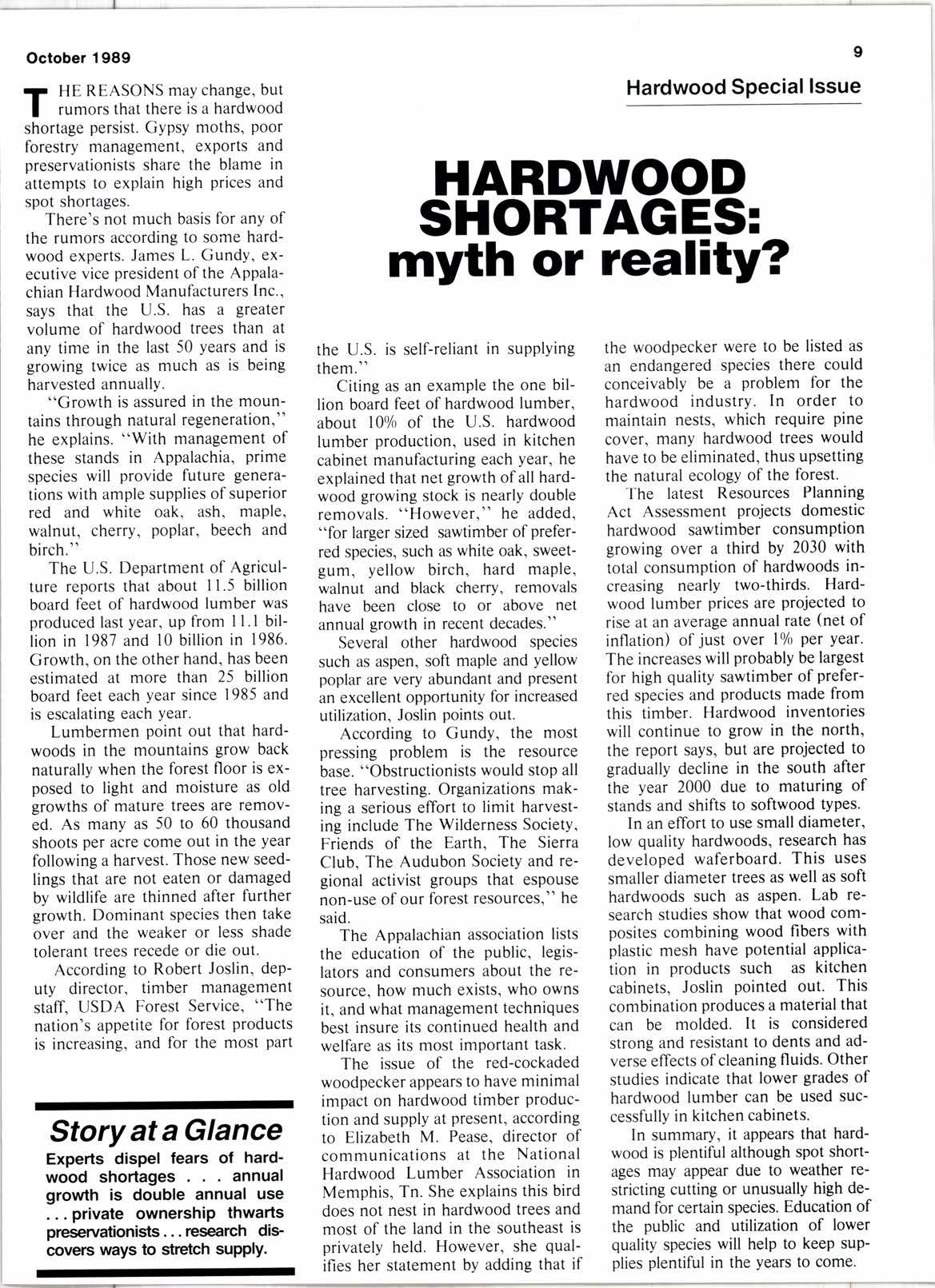
2 minute read
HARDWOOD SHORTAGES: myth or reality?
the U.S. is self-reliant in supplying them."
Citing as an example the one billion board feet of hardwood lumber, about l0o/o of the U.S. hardwood lumber production, used in kitchen cabinet manufacturing each year, he explained that net growth of all hardwood growing stock is nearly double removals. "However," he added, "for larger sized sawtimber of preferred species, such as white oak, sweetgum, yellow birch, hard maPle, walnut and black cherry, removals have been close to or above net annual growth in recent decades."
Several other hardwood species such as aspen, soft maple and yellow poplar are very abundant and present an excellent opportunity for increased utilization, Joslin points out.
According to Gundy, the most pressing problem is the resource base. "Obstructionists would stop all tree harvesting. Organizations making a serious effort to limit harvesting include The Wilderness Society, Friends of the Earth, The Sierra Club, The Audubon Society and regional activist groups that espouse non-use of our forest resources," he said.
The Appalachian association lists the education of the Public, legislators and consumers about the resource, how much exists, who owns it, and what management techniques best insure its continued health and welfare as its most important task.
The issue of the red-cockaded woodpecker appears to have minimal impact on hardwood timber Production and supply at present, according to Elizabeth M. Pease. director of communications at the National Hardwood Lumber Association in Memphis, Tn. She explains this bird does not nest in hardwood trees and most of the land in the southeast is privately held. However, she qualifies her statement by adding that if the woodpecker were to be listed as an endangered species there could conceivably be a problem for the hardwood industry. In order to maintain nests, which require Pine cover, many hardwood trees would have to be eliminated, thus upsetting the natural ecology of the forest.
The latest Resources Planning Act Assessment projects domestic hardwood sawtimber consumPtion growing over a third bY 2030 with total consumption of hardwoods increasing nearly two-thirds. Hardwood lumber prices are projected to rise at an average annual rate (net of inflation) ofjust over l% Per Year. The increases will probably be largest for high quality sawtimber of preferred species and products made from this timber. Hardwood inventories will continue to grow in the north, the report says, but are projected to gradually decline in the south after the year 2000 due to maturing of stands and shifts to softwood types.
In an effort to use small diameter, low quality hardwoods, research has developed waferboard. This uses smaller diameter trees as well as soft hardwoods such as aspen. Lab research studies show that wood composites combining wood fibers with plastic mesh have potential application in products such as kitchen cabinets, Joslin pointed out. This combination produces a material that can be molded. It is considered strong and resistant to dents and adverse effects of cleaning fluids. Other studies indicate that lower grades of hardwood lumber can be used successfully in kitchen cabinets.
In summary, it appears that hardwood is plentiful although spot shortages may appear due to weather restricting cutting or unusually high demand for certain species. Education of the public and utilization of lower quality species will help to keep supplies plentiful in the years to come.










